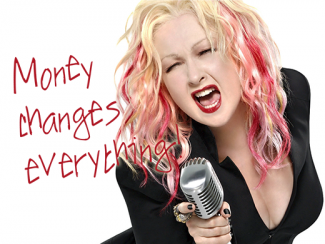FREE MONEY
Guaranteed Annual Income: We gotta be careful what we wish for

CYNDI LAUPER WAS PROBABLY RIGHT: MONEY CHANGES EVERYTHING. But we can never be sure how. That’s at the heart of the debate over a Guaranteed Annual Income.
On the upside, a GAI could contribute to the well-being of an entire society by directly helping to alleviate poverty and reduce inequality.
On the downside, a GAI could be just a dole scheme, replacing quality public services (and the workers who provide them), and providing indirect transfers from government to private industry via the poor. Plus, it could effectively subsidize low-wage employers, weakening demands for higher wages.
There is support for a GAI right across the political spectrum. Billionaires like Elon Musk, Mark Zuckerberg and Richard Branson like the idea. The Canadian Labour Congress, on the other side of the class divide, has been on record as supporting its own version of a GAI since 1988.
Within progressive ranks, however, as elsewhere, there is no consensus. Organized labour around the world is by no means united on this matter. Some commentators see the GAI as part of a “capitalist road to communism,” while others, like the Ontario Coalition Against Poverty’s John Clarke and American social critic Chris Hedges, consider it a soft trap that preserves the status quo and enshrines inequality.
The debate rages among progressive-minded people, in good part because the term “guaranteed annual income” does not refer to only one thing, but many, often contradictory things.
A GAI that worked in Manitoba
The GAI has already been tried. In the 1970s, the so-called “Mincome” was introduced in Dauphin, Manitoba, and has since been generally considered a success by several measures: it did not, as feared by some, reduce participants’ work availability very much, it did away with the social “welfare” stigma, and significantly improved health in the community. The experiment was subsequently abandoned with a change of government, and largely forgotten about.
But experiments are currently under way in Finland, Scotland and in Ontario.
The three-year pilot project in Ontario is testing whether no-strings-attached cash payment of up to $1,400 a month can boost health, education and housing for people living in poverty. Those with disabilities receive an additional $500 a month.
The payments are limited to adults with incomes under $34,000 before taxes and deductions, or couples with incomes under $48,000.
Should participants find employment or get a better job, their basic income payments are reduced by 50 cents for every dollar earned until they are no longer financially eligible. But unlike social assistance, which is adjusted monthly, basic income payments are calculated once a year, based on the participant’s previous year’s income tax return.
Early indications from the program are positive. A February 2018 Toronto Star story on it has the headline: From ‘barely surviving’ to thriving: Ontario basic income recipients report less stress, better health
What do we really want?
The GAI appears to be an idea whose time may have finally come.
Estimates of the costs of implementing it in Canada range from a ludicrous $800 billion (based upon the assumption that even babies would get it) to a more realistic and feasible $76 billion.
What a GAI would cost us is pretty much beside the point. The real debate is over what problem are we actually trying to solve. Do we want to use a GAI to:
[A] simply address poverty relief in a targeted fashion, as a 21st century replacement for social assistance, or
[B] should it be part of a package of pro-active reforms to take on structural inequality as a whole?
Using a GAI to tackle structural inequality would place a GAI within a context of other progressive measures, such as improved labour rights, enhanced employment standards, expanded public services, minimum wage increases tied to inflation, EI reform, and tax fairness.
A GAI of this kind would not displace, but complement, substantial improvements to the “social wage”—that is, public and universal goods and services like medicare, pharmacare, denticare, child care, pensions, cheap public transit, and ready access to affordable housing and postsecondary education.
If implementing this entire program is unfeasible in the short and medium term, then we must choose, and here a substantial debate is to be had. Which is a more efficient use of available resources in the here and now—topping up individual incomes, or increasing the social wage?
A GAI is well worth considering and debating.
But, we have to be wary of neo-liberal wolves in GAI clothing. We cannot let our desire to do good for all, blind us to the devious desires of the 1% to latch on to the GAI as a way to do good for just themselves—one more time.
- 30 -
CHRIS HEDGES: “The oligarchs ‘Guaranteed Basic Income” scam
CCPA: Basic Income: Rethinking social policy












Add new comment